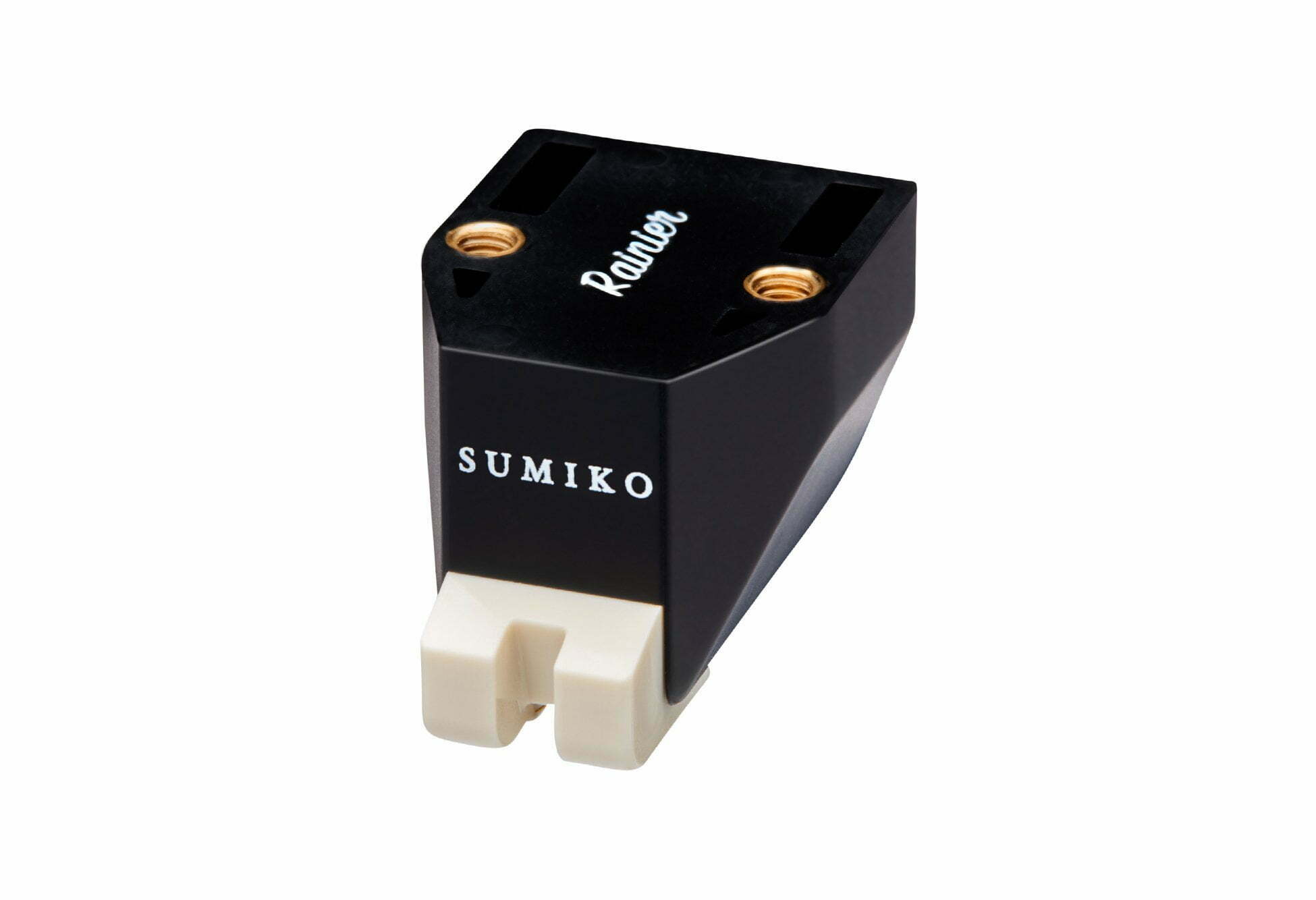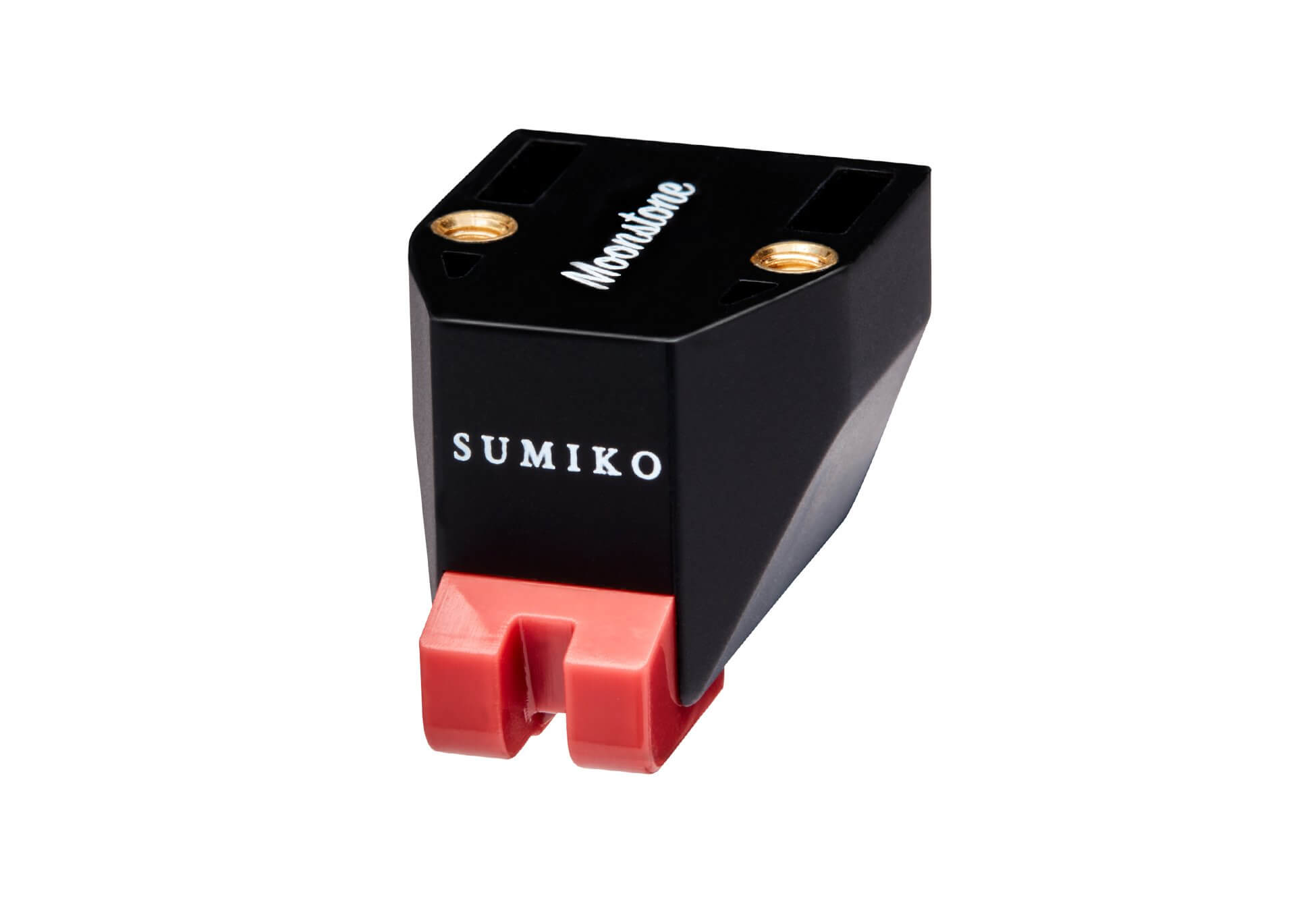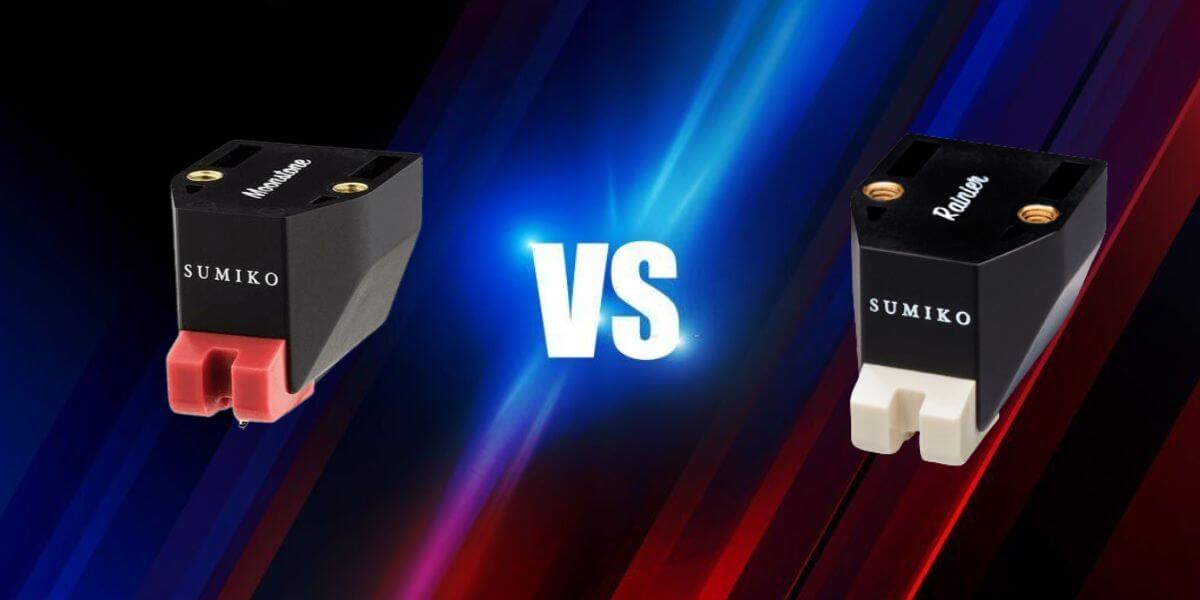Sumiko is a long-standing company that has been making high-quality phono cartridges since the 80s.
However, throughout the years, they’ve released a lot of different cartridges. In this article, we compared Sumiko Rainier vs Moonstone.
We looked at their similarities and differences in sound, build quality, affordability, and more to help you decide which cartridge is for you.
Sumiko Rainier vs Moonstone Overview
The Rainier and the Moonstone belong to Sumiko’s latest Oyster Series cartridges. That said, they’re pretty similar to one another.
However, the Moonstone’s higher frequency response range of 12Hz to 33kHz and 30dB @ 1kHz channel separation is what gives it an edge.
These higher numbers let Moonstone create succinct sounds and a more impressive stereo separation than the Rainier.
| Image | Product | Detail | Price |
|---|---|---|---|
 | Sumiko Rainier |
| Price |
 | Sumiko Moonstone |
| Price |
All About Sumiko Rainier
The Sumiko Rainier is a moving magnet—or MM—phono cartridge. Briefly, what this means is that a magnet in the cantilever holds the stylus or needle.
A magnet sits between coils and creates a magnetic field as it moves. The magnetic fields produced are the ones responsible for the production of audio signals.
Sumiko’s Rainier is one of the manufacturer’s more reasonably priced releases, but that doesn’t mean it can’t compete with its much pricier siblings.
This cartridge boasts its well-represented soundstage. It combines warmth, emotion, and clarity to deliver the sound of instruments and vocals.
All About Sumiko Moonstone
The Sumiko Moonstone is also an MM cartridge. It’s one of Rainier’s slightly pricier siblings—but it still doesn’t break the bank!
Sumiko’s website shows that it’s the apex among the other cartridges in its series as well. It’s compatible with a lot of tonearms and MM preamps too.
The Moonstone offers richness, warmth, and clarity in sound above all else. In addition, as the website describes, this cartridge isn’t just quiet. The noise with the Sumiko Moonstone is nearly-absent.
Related: An A–Z Sumiko Moonstone Review
Differences and Similarities Between Rainier and Moonstone
The Rainier and Moonstone belong to one of the latest sets of Sumiko’s Oyster Series cartridges, which means they share many similarities. With that said, they also have some significant differences that explain the disparity between their price points.
Sumiko Rainier and Moonstone Similarities
Starting with the general build, Sumiko Rainier and Moonstone have the same mass at 6.5g. They also share the same dimensions of 17.2 x 18.8 x 29mm. Colors aside, the body of both cartridges looks identical.
These cartridges have the same 0.3 x 0.7mil elliptical-shaped stylus as well. Elliptical styluses are more accurate with details and produce less distortion. This characteristic makes it a popular stylus shape choice among hobbyists and professionals.
Interestingly, because they have the same stylus style and size, their styluses are possible replacements for one another. We’ll take a closer look at this later on.
In terms of build material, both have aluminum pipe cantilevers and high-purity copper coils. However, according to Sumiko’s website, the Moonstone’s aluminum pipe cantilever is 0.5mm.
The build quality of the two cartridges is at par with one another. Sumiko is known for its range of high-quality audio gear, handcrafted in Yokohama, Japan. Needless to say, you can expect the makers to put the same love and care into these two cartridges.
In addition, the Rainier and Sumiko are quite easy to install because they’re designed to align almost effortlessly. They have threaded holes built right into the cartridges’ bodies for a straightforward installation.
The manufacturer’s recommended tracking force is 2.0g for both of them. However, you can always experiment with the tracking weights.
Since different turntables have subtle differences, you can experiment with tracking weights to find the one that fits best for the sound you want.
Sumiko Rainier and Moonstone Differences
The most obvious and distinguishing visual difference between the Rainier and the Moonstone is the color of their cantilever’s casing. The Rainier sports a white casing, while the Moonstone has a maroon assembly.
These colors also distinguish them from their other sibling in the Oyster Series, the Olympia—which sports a green cantilever casing.
In addition, below is a table that summarizes some of the other differences between the two cartridges.
| Category | Rainier | Moonstone |
| Frequency Response | 15 Hz to 25kHz | 12 Hz to 33kHz |
| Output | 5.0mV | 3.0mV |
| Channel Separation | 25dB @ 1kHz | 30dB @ 1kHz |
| Channel Balance | 1.5dB @ 1kHz | 0.5dB @ 1kHz |
| Compliance | 10×10-6cm/dyn @ 100Hz | 12×10-6 cm/dyn @ 10kHz |
The above table shows that the Moonstone has a better frequency response than the Rainier. Essentially, a higher frequency response range means more detail is produced in the sounds.
Most cartridges on the higher end have wider ranges, but the baseline range is between 20Hz to 20kHz.
Must Read: Sumiko Songbird vs Blackbird full comparison
The Moonstone also has a higher channel or stereo separation compared to its sibling. This denotes more distinction between the sounds from the left and right in the original track.
However, for the rest of the categories, like output and compliance—these have more to do with the cartridges’ difference in capacity and have little to do with the sound they produce.
Who Does What Better?
So, given their similarities and differences, which cartridge does what better? This section looked at metrics like sound, affordability, and aesthetics to decide which cartridge is best.
Sound
The Sumiko Rainier offers a broader and rounder soundstage than most cartridges you’ll encounter at this price point. It doesn’t miss out on the warmth and emotions of sounds produced.
However, it’s considerably lacking in precision. Because of this, the bass and sounds in the lower frequency were a bit lacking in detail.
Moonstone has a superior frequency response among all of the Oyster Series cartridges. It produces a clearer and fuller sound with no lapses in detail.
For some, this is enough to choose the Moonstone over the Rainier. Because of the former’s higher frequency response, you might automatically assume that the Rainier just doesn’t compare anymore.
Well, for the most part, that makes sense. However, experienced vinyl hobbyists don’t recommend relying solely on frequency response when deciding on a purchase. It’s not the only basis for sound quality, either.
Ultimately, you have to consider the kind of music you listen to and your budget.
Affordability
If we’re talking about affordability, the point ultimately goes to the Sumiko Rainier. It’s usually the first turntable upgrade most people opt for because of what you’re getting at this reasonable price point.
The affordability of this cartridge doesn’t sacrifice overall sound and build quality. The same can be said about the Moonstone, but it comes at a slightly steep price. Nevertheless, it still isn’t overly expensive.
For what the Moonstone offers—the crisper, fuller sounds—you’d still be getting a great deal overall. It comes down to how much detail you’d want to hear and how much you’re willing to shell out for that.
Related: Check this extensive Sumiko Pearl and Oyster reviews
Aesthetic
Besides the difference in cantilever casing color, the visual qualities of both cartridges are pretty much the same. Since they still fall on the less pricey side of Sumiko’s offerings, they don’t look overly fancy.
The Rainier and the Moonstone’s design is quite simple, adding to its charm. Don’t be fooled by its simplicity, though; it’s mostly built with compatibility, ease of installation, and alignment in mind.
The Verdict
The final verdict is that, in the end, the choice depends on the kind of music you listen to and the kind of sound you’re after. Let’s take a closer look at who should get the Sumiko Rainier or the Moonstone.
Who Should Get the Sumiko Rainier?
The Sumiko Rainier is a great choice for beginners—those who want to dip their toes into the rabbit hole of turntable upgrades.
However, remember how we mentioned frequency response shouldn’t be your only basis for buying? Well then, what should your basis be?
The short answer is the music you listen to. If the sound you’re looking for is more on the lower frequency, you might want to skip the Rainier.
Moreover, a great thing about these cartridges is that the replacement styluses of both the Rainier and the Moonstone are interchangeable. This means you don’t have to buy a new cartridge body if you want to upgrade to the Moonstone in the future.
Sumiko’s website also suggests an upgrade path to help you experience everything this design has to offer.
Who Should Get the Sumiko Moonstone?
There’s a lot of hype that surrounds the Sumiko Moonstone and for a good reason. Its steeper price point may turn away some, but the sound quality it produces at this price is, quite frankly, unmatched.
If you’re into hearing the details; the warmth of bass, the clarity of midranges and trebles—and if you have the budget to spare—the Moonstone is the right choice for you.
Aside from the fullness and clarity, it’s constantly receiving praise for its exceptional channel separation.
However, one of the few downsides is that there are some people who report that the Moonstone needed a lot of breaking in before it sounded good on their turntables and vinyl records. It can produce some harsh sounds during this break-in period.



